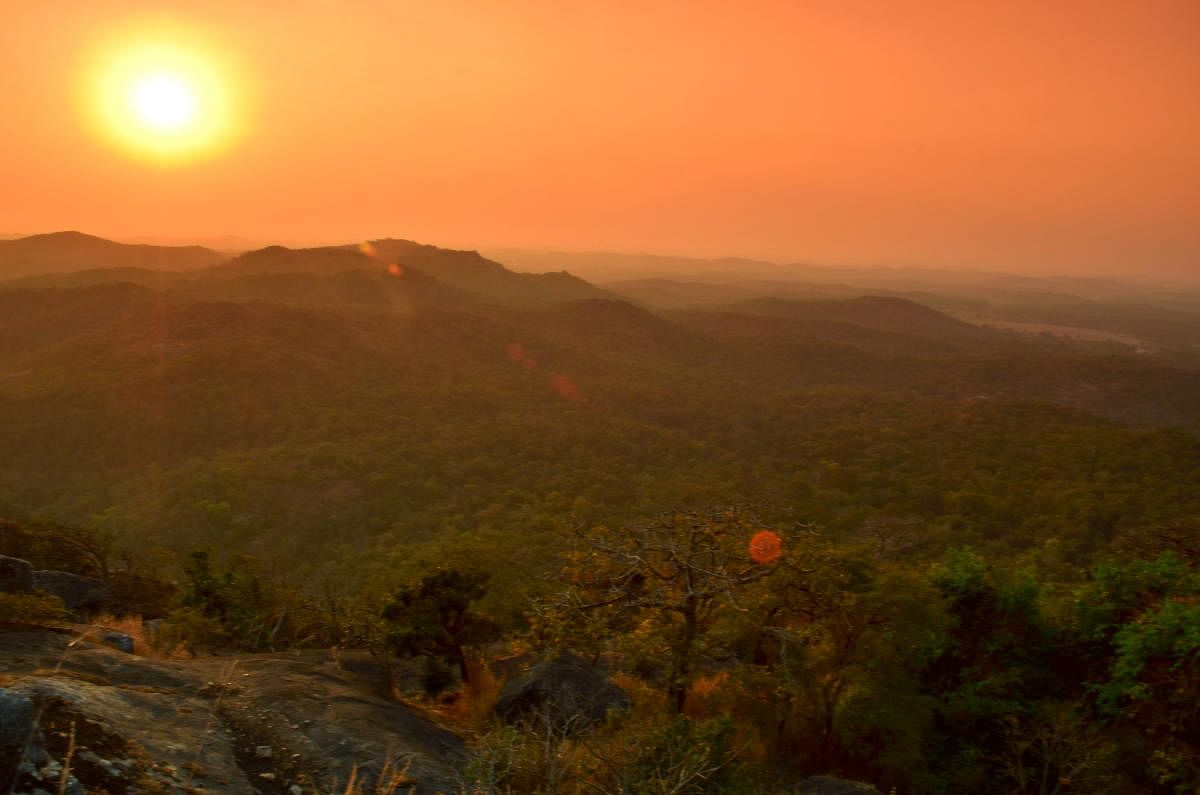The morning mist plays with the mountains, while trees converge at every point. Mountains carpeted in shades of lush green offer a mesmerising view that nature lovers would simply cherish. The splendid sunrise and sunset, the chirping of birds and mist playing hide and seek in the forests are a visual treat. A huge variety of orchids, endemic flowers and pristine landscape at Chandragutti make it the most ideal place for trekking enthusiasts.
Nestled high up on the hill and camouflaged by the dense forest surrounding the area, Chandragutti fort is a dream of every trekker. Chandragutti, which has references in Hindu mythology involving Renukambadevi, the mother of Parashurama, is situated in Sorab taluk of Shivamogga district. Renukamba Temple at Chandragutti is famous in the region. A lot of people visit here to offer their prayers throughout the year. Goddess Renuka is the main deity who is also known as Guttiyamma. This cave temple is in the shape of half moon and hence the name Chandra (moon) Gutti. The annual fair is held in the month of March attracting devotees from not only Karnataka but even from other states like Maharashtra and Goa.
The road adjoining the temple leads to the fort. There is a flight of stone steps to the fort from the forest below.
Ancient structure
Known as Chandraguptapura in the ancient times, Chandragutti Fort is a historical structure. It was built by the Kadambas of Banavasi in the third century. During the reign of Vijayanagara empire in the 13th century, a local chieftain named Bachanna is said to have ruled over Chandragutti. Years later, the fort came under the control of Keladi Nayakas.
The rocky mountain bed of the fort is 850 feet above the sea level. The path leads to the first gateway of the fort, which is in a dilapidated state. It has lost much of its walls over the years due to the fury of nature. A few steps further, there is the second gateway to the fort. This is a complex structure designed to restrict enemies coming to the fort. It has a separate place where heads of the army stayed. The fort’s design indicates the importance that was given for safety and protection in those days. There is an extended platform that provides a clear view of the approach routes to the fort.
Upon entering the fort, traces of five streams may be seen. These were the sources of drinking water for the residents of the fort. There is an oil well at the fort where oil was stored. Also, the fort has Maddina Patna, a place where ammunition was stored. There is a stone bowl that was used by horse to drink water. A pond inside the fort with clean water is a major attraction.
The fort has withstood natural calamities. The wall built on a slope that stands right at the edge speaks volumes about labourers who dealt with heavy rocks and stones while building the structure, which is located very close to the edge. A trek to Chandragutti Fort, which is a quiet place with a gentle breeze all the time, can be a delightful and memorable experience. The view from the top of the hill is breathtaking. The blanket of greenery below is awe-inspiring.
Those from North Karnataka may reach the place via Sirsi, Haveri or Hangal, while those from the South may come via Shivamogga. They may proceed to Siddapur from there and then reach Chandragutti.
Carrying food and water is advisable as Chandragutti is a small and remote village. An excursion to the fort along with the family can be a pleasant experience. The fort can be visited during all seasons. But poor infrastructure and facilities have kept this place away from the tourist circuit. As a result, despite having historical importance and potential, this place remains less-explored.
